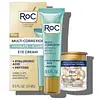What's inside
What's inside
 Key Ingredients
Key Ingredients

 Benefits
Benefits

 Concerns
Concerns

 Ingredients Side-by-side
Ingredients Side-by-side

Water
Skin ConditioningGlycerin
HumectantDimethicone
EmollientPropanediol
SolventCetyl PEG/PPG-10/1 Dimethicone
EmulsifyingSodium Hyaluronate
HumectantBis-PEG/PPG-14/14 Dimethicone
EmollientButylene Glycol
HumectantCaffeine
Skin ConditioningBiotin
AntiseborrhoeicPalmitoyl Tetrapeptide-7
Skin ConditioningMagnesium Aspartate
Skin ConditioningPalmitoyl Tripeptide-1
Skin ConditioningZinc Gluconate
Skin ConditioningChrysin
Skin ConditioningN-Hydroxysuccinimide
Skin ConditioningCopper Gluconate
Skin ConditioningSteareth-20
CleansingMethyl Methacrylate/Glycol Dimethacrylate Crosspolymer
Chlorhexidine Digluconate
AntimicrobialCaprylyl Glycol
EmollientChlorphenesin
AntimicrobialPotassium Sorbate
PreservativePhenoxyethanol
PreservativeSodium Chloride
MaskingSodium Citrate
BufferingCitric Acid
BufferingWater, Glycerin, Dimethicone, Propanediol, Cetyl PEG/PPG-10/1 Dimethicone, Sodium Hyaluronate, Bis-PEG/PPG-14/14 Dimethicone, Butylene Glycol, Caffeine, Biotin, Palmitoyl Tetrapeptide-7, Magnesium Aspartate, Palmitoyl Tripeptide-1, Zinc Gluconate, Chrysin, N-Hydroxysuccinimide, Copper Gluconate, Steareth-20, Methyl Methacrylate/Glycol Dimethacrylate Crosspolymer, Chlorhexidine Digluconate, Caprylyl Glycol, Chlorphenesin, Potassium Sorbate, Phenoxyethanol, Sodium Chloride, Sodium Citrate, Citric Acid
Water
Skin ConditioningCaprylic/Capric Triglyceride
MaskingGlycerin
HumectantNiacinamide
SmoothingStearyl Alcohol
EmollientCoco-Caprylate
EmollientGlyceryl Stearate
EmollientCapryloyl Glycerin/Sebacic Acid Copolymer
Skin ConditioningDiheptyl Succinate
EmollientDimethyl Mea
BufferingLycium Barbarum Fruit Extract
AstringentHamamelis Virginiana Extract
AntiseborrhoeicCopernicia Cerifera Wax
Camellia Sinensis Leaf Extract
AntimicrobialCentella Asiatica Meristem Cell Culture
AntioxidantCitrus Aurantium Dulcis Fruit Extract
MaskingCitrus Medica Limonum Fruit Extract
Skin ConditioningPyrus Malus Fruit Extract
Skin ConditioningSaccharum Officinarum Extract
MoisturisingTerminalia Ferdinandiana Fruit Extract
AntioxidantHydroxypropyl Cyclodextrin
MaskingPalmitoyl Tripeptide-38
Skin ConditioningAcetyl Hexapeptide-8
HumectantSodium Hyaluronate
HumectantThioctic Acid
AntioxidantPanthenol
Skin ConditioningAscorbyl Palmitate
AntioxidantSimmondsia Chinensis Seed Oil
EmollientResveratrol
AntioxidantCopper PCA
HumectantTetrahexyldecyl Ascorbate
AntioxidantCaffeine
Skin ConditioningButylene Glycol
HumectantAllantoin
Skin ConditioningXanthan Gum
EmulsifyingGlyceryl Stearate Citrate
EmollientSodium Hydroxide
BufferingPhenoxyethanol
PreservativeEthylhexylglycerin
Skin ConditioningWater, Caprylic/Capric Triglyceride, Glycerin, Niacinamide, Stearyl Alcohol, Coco-Caprylate, Glyceryl Stearate, Capryloyl Glycerin/Sebacic Acid Copolymer, Diheptyl Succinate, Dimethyl Mea, Lycium Barbarum Fruit Extract, Hamamelis Virginiana Extract, Copernicia Cerifera Wax, Camellia Sinensis Leaf Extract, Centella Asiatica Meristem Cell Culture, Citrus Aurantium Dulcis Fruit Extract, Citrus Medica Limonum Fruit Extract, Pyrus Malus Fruit Extract, Saccharum Officinarum Extract, Terminalia Ferdinandiana Fruit Extract, Hydroxypropyl Cyclodextrin, Palmitoyl Tripeptide-38, Acetyl Hexapeptide-8, Sodium Hyaluronate, Thioctic Acid, Panthenol, Ascorbyl Palmitate, Simmondsia Chinensis Seed Oil, Resveratrol, Copper PCA, Tetrahexyldecyl Ascorbate, Caffeine, Butylene Glycol, Allantoin, Xanthan Gum, Glyceryl Stearate Citrate, Sodium Hydroxide, Phenoxyethanol, Ethylhexylglycerin
Ingredients Explained
These ingredients are found in both products.
Ingredients higher up in an ingredient list are typically present in a larger amount.
Butylene Glycol (or BG) is used within cosmetic products for a few different reasons:
Overall, Butylene Glycol is a safe and well-rounded ingredient that works well with other ingredients.
Though this ingredient works well with most skin types, some people with sensitive skin may experience a reaction such as allergic rashes, closed comedones, or itchiness.
Learn more about Butylene GlycolCaffeine is most associated with coffee, tea, and cacao. In skincare, it helps with calming inflammation and is rich in antioxidants.
While caffeine is used to treat cellulite and and dark circles, further studies are needed to prove this. It has been believed to help with these skin conditions due to its ability to dilate blood vessels and increase blood flow.
Some studies are looking into caffeine's ability to protect against UV rays.
Learn more about CaffeineGlycerin is already naturally found in your skin. It helps moisturize and protect your skin.
A study from 2016 found glycerin to be more effective as a humectant than AHAs and hyaluronic acid.
As a humectant, it helps the skin stay hydrated by pulling moisture to your skin. The low molecular weight of glycerin allows it to pull moisture into the deeper layers of your skin.
Hydrated skin improves your skin barrier; Your skin barrier helps protect against irritants and bacteria.
Glycerin has also been found to have antimicrobial and antiviral properties. Due to these properties, glycerin is often used in wound and burn treatments.
In cosmetics, glycerin is usually derived from plants such as soybean or palm. However, it can also be sourced from animals, such as tallow or animal fat.
This ingredient is organic, colorless, odorless, and non-toxic.
Glycerin is the name for this ingredient in American English. British English uses Glycerol/Glycerine.
Learn more about GlycerinPhenoxyethanol is a preservative that has germicide, antimicrobial, and aromatic properties. Studies show that phenoxyethanol can prevent microbial growth. By itself, it has a scent that is similar to that of a rose.
It's often used in formulations along with Caprylyl Glycol to preserve the shelf life of products.
Sodium Hyaluronate is hyaluronic acid's salt form. It is commonly derived from the sodium salt of hyaluronic acid.
Like hyaluronic acid, it is great at holding water and acts as a humectant. This makes it a great skin hydrating ingredient.
Sodium Hyaluronate is naturally occurring in our bodies and is mostly found in eye fluid and joints.
These are some other common types of Hyaluronic Acid:
Learn more about Sodium HyaluronateWater. It's the most common cosmetic ingredient of all. You'll usually see it at the top of ingredient lists, meaning that it makes up the largest part of the product.
So why is it so popular? Water most often acts as a solvent - this means that it helps dissolve other ingredients into the formulation.
You'll also recognize water as that liquid we all need to stay alive. If you see this, drink a glass of water. Stay hydrated!
Learn more about Water